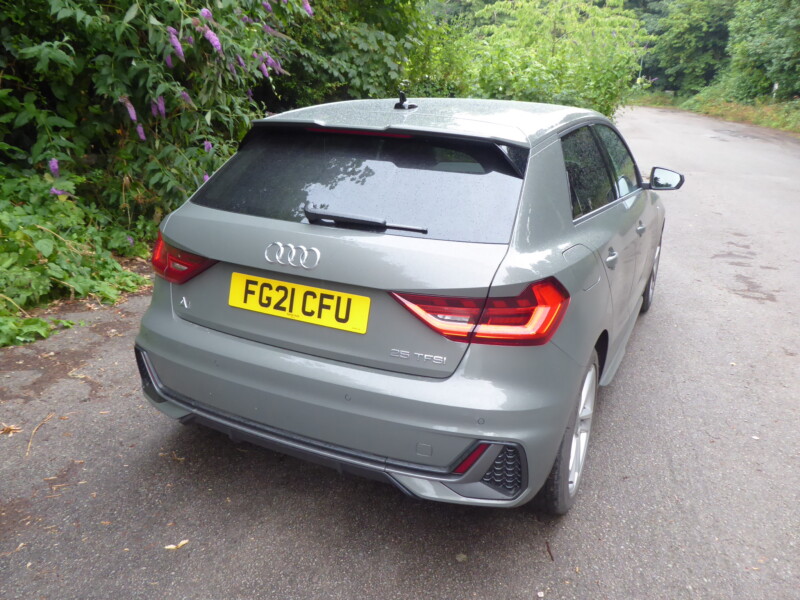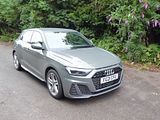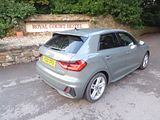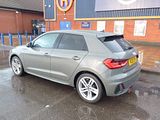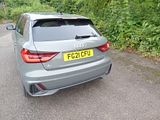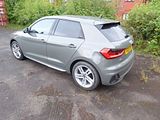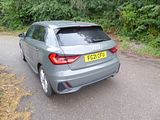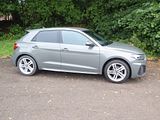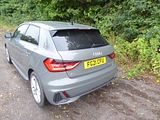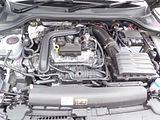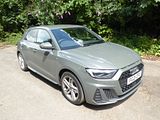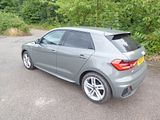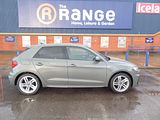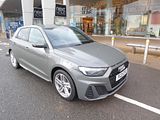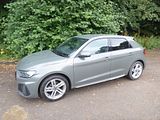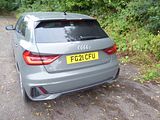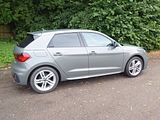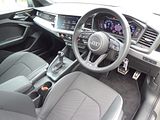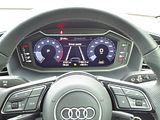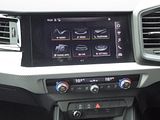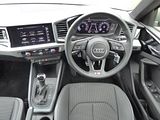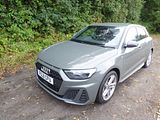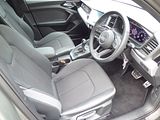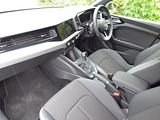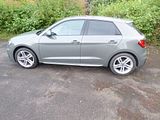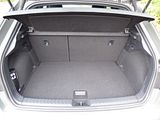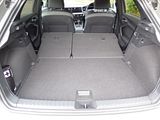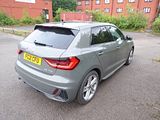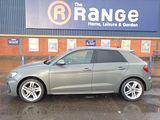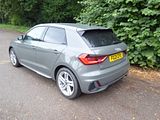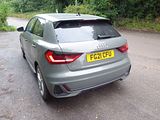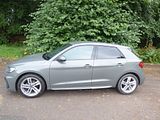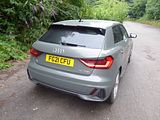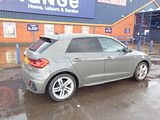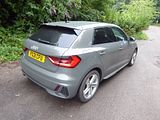Audi has seen incredible growth in sales over the last half century, fuelled not just by their innovations such as the Quattro all-wheel drive system, class leading aerodynamics with the 1982 Audi 100 and the procon-ten safety system, but the expansion of their model range from just a couple of designs, the mid-sized 80 and larger 100, as well as a market-wide move to premium and up-market brands. Real volume, of course, still comes from small cars in the B and C segments and it is with the former of these where the brand has struggle to find success. Not that were was necessarily much wrong with the products they came up with. The first of these was the Audi 50 in 1974. It had a short life as an Audi but with VW Polo badges on it and slightly lower prices, the car sold well. It was a long time before Audi offered another product in the B Segment, and when they did, in 2000, it was with the radical A2 which proved to be a step too far in terms of concept for the market, so the car had a short production life and was ultimately deemed a commercial disappointment. Undeterred, Audi tried again with the A1 of 2010, basing their new supermini on the platform of the VW Polo and also sharing much with the Skoda Fabia and Seat Ibiza. It really was third time lucky as this was an excellent car, which combined everything you would expect of an Audi in terms of restrained styling and superlative interior quality with commendable refinement. Finally, it seemed Audi had a car to round out their range and to appeal to people who they hoped would fall for the brand and perhaps in time trade up to a larger and costlier model. Accordingly, it was no surprise when a second generation A1 appeared in 2018. Whilst the outgoing car had been offered with a choice of three or five doors, this one, inline with general market trends, came only as a five door. Also following market practice it was a bit bigger than its predecessor, now measuring just over 4 metres. The styling was less rounded and more edgy, and it incorporated the latest tech, some of which you may welcome more than other features.
Whilst the first A1 was offered with a range of petrol and diesel engines, this generation is strictly petrol only. There are four choices, identified by Audi’s new and slightly puzzling naming format as the 25, 30, 35 and 40. The numbers are based on ranges of power output. The 25 and 30 share the same engine, but have 95 and 116 PS respectively, whereas the 35 puts out 150 PS from its 4 cylinder 1.5 TFSi engine and the top spec 40 model has 200 PS from a 2 litre 4 cylinder unit. All A1 models are front wheel drive only, there is no option of a quattro system at all. My test car was the entry level 25 model. This has a 1.0 litre 3 cylinder engine, though without opening the bonnet and having a look, or consulting online sources, I would not necessarily have been able to assert this was the case with any certainty. The engine is refined and noise levels from it are generally low. That said, 95 bhp is not a lot for a car of this size and weight so it was not really a surprise to find that this car is not what you would call rapid. It is fast enough to cope with traffic, of course and there are good bursts of acceleration available but there are times when you will have to work it hard to get the zest you are looking for. The test car had the optional 7 speed S-tronic dual clutch automatic gearbox and this did a good job at shifting between the ratios without you being unduly aware of it doing so. However, I did find at low speed and especially when reversing, that the car could be surprisingly jerky, which did make manoeuvering a bit tricky at times. I did not have the car for long enough to have to put lots of fuel in it, but the on-board trip computer recorded an average of 39 mpg which has to count as rather disappointing, though in fairness, most of miles were urban ones, so this is probably about as poor a figure as you are likely to see.
Sadly, the A1 was not that good to drive, even allowing for the relative lack of power. The steering is very light, with no real feel to it at all. Whilst this means you can park with minimal effort, that jerkiness notwithstanding, it does not get a lot weightier on the move and that means that there is no real incentive to go and enjoy the drive. The A1 does have good levels of grip and the handling is tidy, with understeer only being evident if you really attack a bend with gusto, so if you are looking for a fun car of this type, the A1 is probably not for you, and you should be thinking MINI or Fiesta, but Audi knows its target buyers and has probably deliberately set it up this way. The S-Line spec of the car means relatively large 215/45 R17 wheels as well as stiffened and lowered suspension and this means that the ride is firm, though I did not find it as punishing as some cars with sporting pretension. Sadly those tyres do contribute to significant noise levels, thus undermining the reputation for refinement somewhat. By all accounts the A1 with smaller wheels is a much more peaceful car in which to ride. The brakes were reassuring with a progressive feel to the pedal. There is a conventional pull-up handbrake fitted between the seats. Whilst on the move, visibility is generally OK, though the door mirrors are quite small and there is the challenge of the thick C pillar which means that over the shoulder views are limited. Nonetheless, the relatively short dimensions of the A1 meant that it was quite easy to position on the road and to park.
I’m not quite sure what happened when Audi signed off the interior. The quality of the old model was superlative and was one reason why people would have been happy to pay the price premium for an A1 over a Polo or a Fabia. This one is very different. There is a very edgy design with lots of straight lines and hard edges which may try to look modern and trendy, but the overall effect fails to impress. The plastics used are just dreadful. Very hard and cheap feeling, they look like they should have come from a budget car from 20 years ago, not one in 2021 with prestige ambitions. The dash mouldings area bad and the door casings are worse in this respect. At least the leather-wrapped steering wheel is nice to the touch, but the gloss black inlays, whilst on trend, do not add to the ambience and they show fingerprints and dust very readily. I was also disappointed to find that there were some nasty reflections in the windscreen at times, as well. At least the instruments are clear and easy to read. All versions of the A1 feature Audi’s Digital Cockpit. This presents the main instruments’ information in a digital cluster that can be altered to show speed and revs more or less prominently. It can also show details on gear selection, time, radio and the telephone menu. As configured in “standard” mode, the binnacle contains two large dials for the speedometer and rev counter with smaller dot chart style gauges at either end of the cluster for the fuel level and water temperature. The centre of the display area has trip computer data and you can cycle through the various menu and display options with a turn wheel on the left hand steering wheel spoke. You will also find audio repeaters o the wheel. The column stalks also had a cheap feel to them. There is a lower left stalk for the cruise control. Lights operate from a rotary dial on the dash to the right of the wheel. The centre of the dash is dominated by the integrated 8.8” colour touch screen. There are a lot of functions contained within this and with just one separate button for radio volume, you will have to use the screen for everything else. Features include Apple Car Play and Android Auto, as well as lots of settings and car-related data. The colour screen can connect to your smartphone using Bluetooth or a USB port to access music, phone calls, maps and other apps. Only the Vorsprung model gains the larger 10.1-inch MMI Navigation Plus touchscreen as standard. This provides 3D city models to make it easier to work out where you are in relation to the map. It also has live traffic information, voice recognition and Audi’s Virtual Cockpit that puts the navigation map in the main binnacle so it’s easier to follow directions as you drive. This system can also be added to other A1 Sportback models with the optional Technology Pack. If you choose it, you get a three-year subscription to Audi Connect Infotainment Services to access the internet. Phone Box wireless charging for Qi-enabled smartphones is included with the MMI Navigation Plus pack too. The screen fills the centre of the dash. Audi have made a feature of the air vents to the left of this with what looks like a long vent across the passenger side of the dash but in fact there are only vents that can dispense hot or cold air at either end. The rest of it is just ornamentation and will doubtless collect dust quite quickly. Below the touch screen are the knobs and switches for the dual zone climate control. There are two USB ports.
As the test car was in S-Line trim, you get sporty front seats with integrated headrests. The upholstery is cloth, as it is on all A1 models unless you go for a top spec Vorsprung, and you adjust their position manually. Pleasingly, there is lumbar support for both front seats. The steering wheel telescopes in/out as well as up/down. I was readily able to find a comfortable driving position, and, the rather trendy look and nasty quality plastics notwithstanding, it did not particularly feel like you were driving a small car from this position.
Although this A1 is a little longer than its predecessor, it is still a small car, so it was good to find that rear seat space is quite reasonable for a car of this size and certainly far more accommodating than a 5 door MINI. Legroom will of course depend on how far back the front seats are set, but with a bit of compromise, even tall passengers here should fit, and there is no shortage of headroom, thus addressing one of the constraints of the first generation model. The A1 is not really wide enough for three adults, but three children would fit across the car without difficulty. Thanks to the rear privacy glass and the thick C pillar, it does feel a bit gloomy here, though. There is one seat-back map pocket, and there is no armrest. The boot is not that big, but that is normal for cars of this size, and again it is far larger than you will find in a MINI, perhaps one of the A1’s most direct rivals. It just accommodated my squash bag, lap top bag and one other small bag, which really is not that much. You can, of course, create more space by dropping the rear seat backrests down, which yields a flat load area. Under the boot floor is a get-you-home puncture repair kit in lieu of a spare wheel. I noted that the emergency triangle fits into a recess in the boot lid which is a neat solution. Inside the cabin, there is a reasonable sized glovebox, deep door pockets, a good area in front of the gear lever and the centre console contains 3 cup holders as well as a cubby under the central armrest.
Like many new cars these days, the initial range was very limited with just one engine choice, but it was quickly added to as production of the new car got fully up to speed so within a few months of the late 2018 launch there was a fully populated range of cars, with the four engine choices already detailed. Most have the choice of a manual or automatic gearbox, and then you need to select a trim level before heading to the extensive options list. Audi launched the A1 Sportback with SE as the entry-point to the range, but this has since been renamed Technik. It’s far from basic thanks to 15-inch alloy wheels, LED lights front and rear as well as dynamic rear indicators that scroll across the lens when illuminating. You also get the 10.25-inch Digital Cockpit instruments, 8.8-inch colour touchscreen with voice control, electric front windows, air conditioning, and cloth upholstery. Next in line is the Sport that adds larger 16-inch alloy wheels, rear parking sensors, cruise control and some sporty front seats with manual lumbar support. It also comes with Audi Drive Select to offer Dynamic, Efficiency, Individual and Auto modes for the how the steering, engine and gearbox respond. S Line customers are treated to 17-inch alloy wheels, exterior styling pack including a more aggressive front grille, and firmer Sport suspension as well as sports seats, drilled metal pedals and rear electric windows. There are three additional versions of the S Line, starting with the Contrast Edition which has 18-inch alloys, darkened headlight lenses and Python yellow paint. It also has a gloss black roof, door mirrors and other outside details in this finish. Choose the Style Edition and you get different alloys in a bronze finish, while inside there’s and LED Ambient Lighting pack. The big change for the Competition is its more potent 2 litre engine, but it also comes with red brake calipers and platinum grey wheels and door mirror caps. Finally, the Vorsprung model ups the ante with its own 18-inch wheel design and front sports seats trimmed in Alcantara and leatherette. Audi also includes its MMI Navigation Plus with MMI touch infotainment as well as the Virtual Cockpit that lets the driver configure the main dash display with a variety of different screens.
I was a big fan of the first generation A1, so my expectations were high for this car. I was massively disappointed. The car was not much fun to drive, though I would imagine that this could be fixed by going for one with a more powerful engine, but that cheap and nasty interior is a feature of the whole range and is simply unforgiveable especially given the A1’s price. I can see that some financial cost controller probably thought they could get away with cheaper quality materials but honestly, the real selling point of the A1, and the reason why people would pay a hefty price premium over the other small cars in the VAG family was all around the quality of the interior. Take that away, and I could not think of any reason why I would want an A1 compared to a Skoda Fabia which actually feels more premium inside than the Audi. What a shame.

